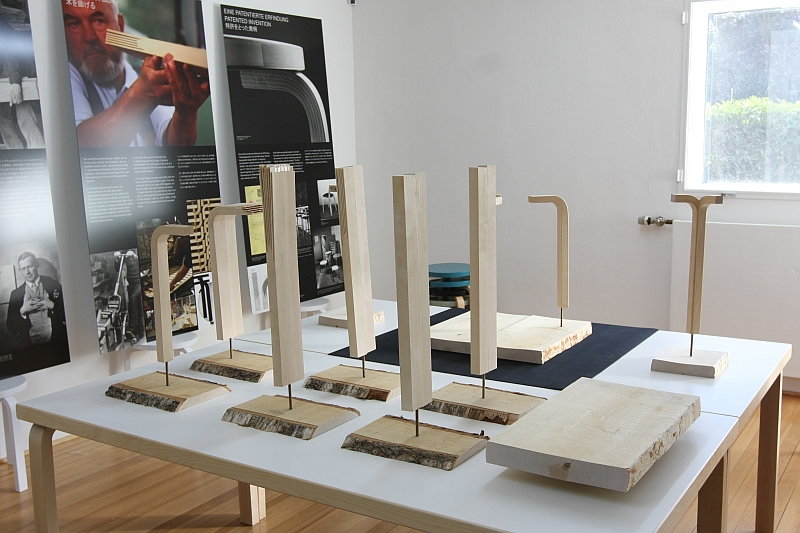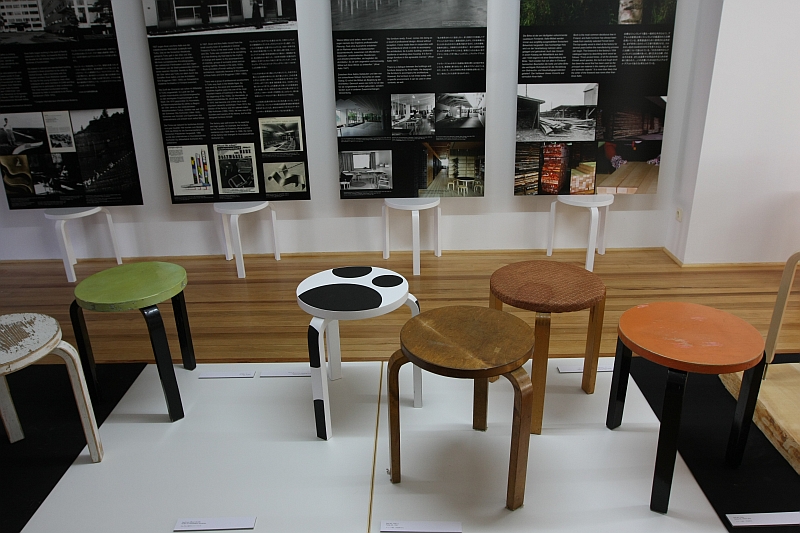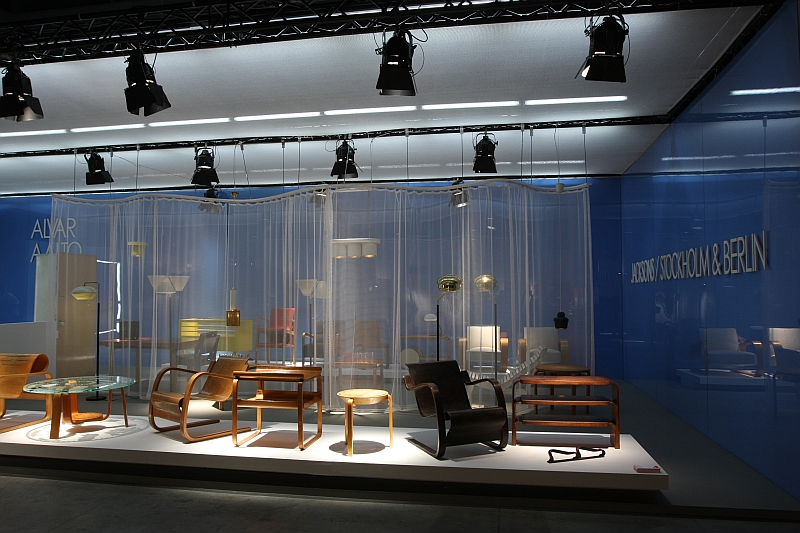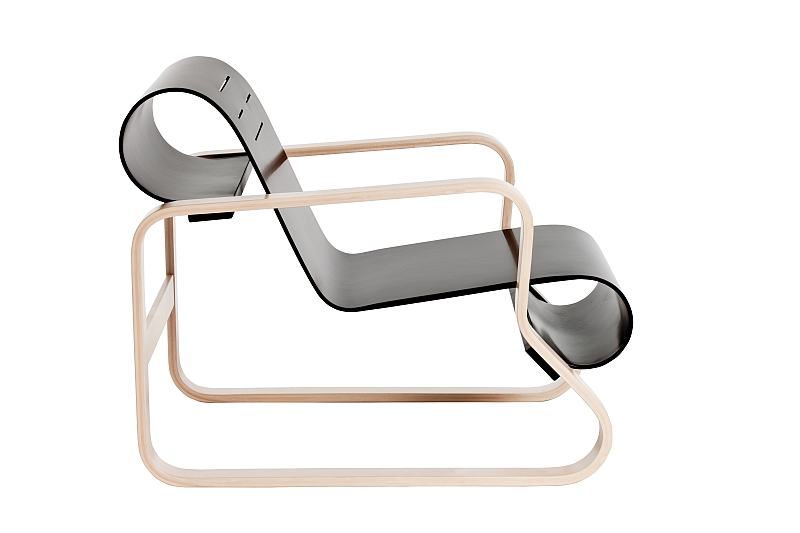Vitra acquire Artek. Eames meets Aalto. Again.
At Design Miami Basel 2013 one of the more impressive presentations was without question the collection of Alvar Aalto furniture shown by Stockholm/Berlin based gallery Jackson Design.
A presentation that included rare examples of Alvar Aalto’s furniture for and by the Finnish manufacturer Artek. And all available for purchase.
Basel based furniture manufacturer Vitra have gone one step further, and have purchased Artek.
Following completion of his architecture studies in 1921 Alvar Aalto initially established his own practice in Jyväskylä before in 1927 moving south to Turku. In Turku Aalto became acquainted with Otto Korhonen, director of the local wooden furniture manufacturer Huonekalu-ja Rakennustyötehdas with whom he began cooperating on various Huonekalu-ja Rakennustyötehdas projects.
A consequence of these cooperations was that Alvar Aalto began experimenting with wood and for all the moulding of plywood, experimentation that eventually led him to develop his own furniture objects. The first major works being the furnishings for his 1932 Paimio Sanatorium project.
In 1933 Alvar Aalto presented his furniture in a show at Fortnum & Mason in London. The show was a huge success, so much so that demand for Aalto’s reduced, inexpensive wooden furniture far exceed the competence of both Aalto and Huonekalu-ja Rakennustyötehdas. As a result in 1935 a decision was made to form a company to produce Aalto’s furniture and so better control and manage the future development. In December 1935 Alvar Aalto, his wife Aino Aalto, the art collector Maire Gullichsen and art historian Nils-Gustav Hahl formally established the aforementioned Artek. And today Artek remain the sole licensed producer of Alvar Aalto’s designs.

Creating the L-leg as presented in the exhibition Stool 60 by Alvar Aalto at Ungers Archiv für Architekturwissenschaft Cologne.
A central component of Alvar Aalto’s early furniture was the so called “L-leg” – a construction developed by Alvar Aalto in cooperation with Otto Korhonen and whose poetic simplicity was wonderfully demonstrated in the exhibition “Stool 60 by Alvar Aalto” presented at Ungers Archiv für Architekturwissenschaft in Cologne during Cologne Design Week 2013. Over the decades Aalto extended and developed the L-leg into the Y-leg and the X-leg, but all in essence based on the same, very simple, very ingenious, moulding process.
And it is this process that is more important, and interesting, than the leg itself. For with his L-leg Alvar Aalto led the way in developing methods for moulding plywood, and as such laid the foundation for all subsequent moulded plywood furniture.
Which of course brings us to Charles Eames.
It is often argued that Alvar Aalto was an important source of inspiration for Charles Eames, his major breakthrough coming as it did with his and Eero Saarinen’s success in the 1940 MoMa “Organic Design in Home Furnishings” competition with a seating collection based around moulded plywood shells.
Marilyn Neuhart, however, and somewhat interestingly, sees Eero Saarinen as being more influenced by Alvar Aalto, arguing that Eames was more directly influenced by Marcel Breuer, quoting Peter Blake’s recollection of Charles Eames’ assertion that “…. he couldn’t possibly have done what he did in [furniture design] without Lajko’s [Breuer’s] remarkable pioneering designs” to support her argument.1.
One shouldn’t forget however that Marcel Breuer’s own moulded plywood furniture for Isokon first appeared post-1933. And endearing and enticing as Breuer’s Isokon designs unquestionably are, the decision to follow such a line was, we would argue, a reaction to the reaction to Alvar Aalto’s work.
But then one must consider Göran Schildt’s assertion that Aalto’s Paimio Armchair is a “….translation of Breuer’s Wassily chair into the language of wood”2.
Which is all the sort of delightful circular arguments that can have innocent fools like us chasing our tales for months.
And so while the question of direct and/or indirect inspiration is difficult to clarify what is clear is that had Alvar Aalto not discovered the essential difference between the bending of heated wood as perfected by Michael Thonet and the moulding of multi-layered plywood as perfected by himself, it is questionable how far a Charles Eames would have come. Or better put with which product a Charles Eames would have achieved his breakthrough.
The 1940 award winning MoMa collection would arguably never have been realised.
In addition to the complete Alvar Aalto back catalogue with Artek Vitra have also purchased a fantasy world of furniture design classics by designers and architects including Ilmari Tapiovaara, Shigeru Ban, Tapio Wirkkala, Eero Aarnio. And of course Enzo Mari‘s seminal Sedia 1 chair from his 1974 Autoprogettazione project. A project that remains one of the most important conceptual research projects in the story of modern furniture design.
Ironic in the whole story is that Vitra could so nearly have had access to the Alvar Aalto catalogue without having to buy Artek. In his fulminous George Nelson biography Stanley Abercrombie notes that “Two other suggestions by Nelson were never effectively pursued, however, even though [Herman Miller Chairman] De Pree wrote Nelson in August 1946 that “Your suggestion regarding Mies van der Rohe and Aalto makes a hit with me.”3.
The suggestion was that Herman Miller should organise licences for the production of Mies van der Rohe’s and Alvar Aalto’s furniture. Contracts that had they ever come about would have meant the works of Alvar Aalto would have been part of the Vitra programme since the late 1950s.
Just imagine that……

Stool 60 by Alvar Aalto through Artek. Here as seen in the exhibition Stool 60 by Alvar Aalto at Ungers Archiv für Architekturwissenschaft Cologne.
According to the joint press release Vitra and Artek will continue to trade independently, possibilities for cooperating in terms of manufacturing, distribution and logistics will however be explored. Which we suspect means for all a chance for Vitra to consolidate their Scandinavian business. A region where there is high demand for the Vitra classic’s, but no extended Vitra distribution network.
The purchase also opens a further intriguing possibility; namely, having collected architects as furniture designers and as architects for the Vitra Campus it will be interesting to observe if Vitra now start collecting architects as producers. We can certainly think of another couple of firms who would fit very well into an extended Vitra portfolio. We’ll keep you updated.
And to end, and to clarify the post title a little, while Charles Eames and Alvar Aalto unquestionably met theoretically through their works, we have no direct evidence that Charles Eames ever physically met Alvar Aalto; but lots of circumstantial evidence that they must have met. We do however have firm evidence that George Nelson met Alvar Aalto; in a 1948 letter to Charles Eames Nelson writes, “It was perfectly wonderful running into him [Alvar Aalto] and we went out afterwards and consumed the entire stock of the local bar”4.
We trust the celebrations to mark Vitra’s purchase of Artek were a more reserved affair.
1. Marilyn Neuhart, “The Story of Eames Furniture” gestalten Verlag, Berlin, 2010
2.Göran Schildt in “Aalto Interiors”, Alvar Aalto Museo, Helsinki, 1986
3. Stanley Abercrombie, “George Nelson: The Design of Modern Design” MIT Press, Cambridge Massachusetts, 1995
4. ibid.
Tagged with: alvar aalto, artek, Charles Eames, George Nelson, Vitra


